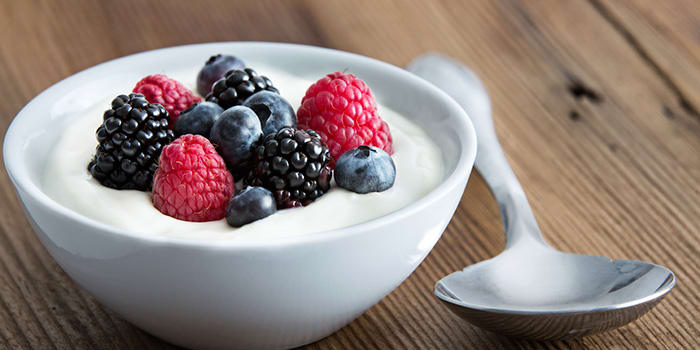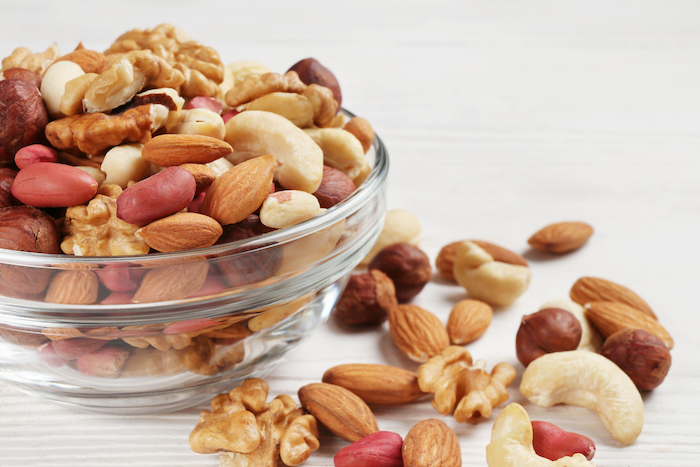What Are Phytonutrients?

Phytonutrient is a blanket term for tens of thousands of compounds found in plants that are necessary for the health and defense of those plants. (“Phyto” = “plant.”)
Unlike vitamins and minerals, phytonutrients are not essential to life, but we believe that eating a wide variety of phytonutrients may help to optimize your overall health, and research suggests they may linked to many health benefits.
Marisol Ortiz, M.S., R.D.N., says that you can think of phytonutrients “as a plant-powered army that assists the human body to be healthy now and later in life.”
What Are the Health Benefits of Phytonutrients?
Phytonutrients fill wide-ranging roles — some are believed to behave like antioxidants, and some studies suggest a link to benefits that impact many body systems.
“Including a variety of plant foods ensures your body is getting many of these powerful nutrients,” Ortiz says.
Studies have suggested that diets rich in these plant compounds may be associated with increased overall health.
Some Types of Phytonutrients
There are upwards of 25,000 phytonutrients, but some in particular have been studied extensively.

Flavonoids
Flavonoids are made up of over 5,000 compounds. They are categorized based on their chemical structures and health benefits. Many flavonoids act as powerful antioxidant-like compounds, which means, as studies suggest, they may have the potential to protect against free radicals.
Researchers have also found that flavonoids may also have the potential to help support a healthy immune system. They are found in the highest concentrations in foods like fruits and vegetables, tea, nuts, and leafy greens.
Isoflavones
Isoflavones are found in legumes such as beans and lentils; soy is one of the top sources. Research suggests that they are among the most powerful phytonutrients.
Polyphenols
Polyphenols are a group of phytonutrients that include various compounds such as curcumin (found in turmeric), resveratrol, capsaicin, and beta-carotene.
More research is needed, but the medical community is excited about their potential link to beneficial impact on oxidative stress and their potential effect on aging.
Lycopene
Lycopene is the phytonutrient that gives tomatoes their beautiful red hue, and has many functions beyond its bright color. This compound, which is also found in found in blood oranges and grapefruit, is a well-researched antioxidant-like compound.
How to Boost Your Phytonutrient Intake

Getting phytonutrients is easy, but arguably, most people don’t eat enough. They are found mainly in fruits and vegetables — the foods that nine out of 10 Americans don’t eat enough of.
You don’t have to take supplements to increase your intake, though. Just start adding in fresh foods that cover the full spectrum of the rainbow — a plant food’s color is largely dictated by its phytonutrients — plus beans, legumes, nuts, and seeds, as often as possible.
“I encourage my clients to find ways to add phytonutrients-rich foods to as many meals and snacks as possible each day,” says Los Angeles-based nutrition expert Natalie Gavi, M.S., R.D.N.
Foods That Help You Get Phytonutrients:
- Peanuts deliver isoflavones, resveratrol, and plant sterols that can help support cardiovascular health. They also have antioxidants.
- Legumes (beans, lentils, peanuts) contain a plentiful supply of polyphenols.
- Chocolate has polyphenols and other antioxidant phytonutrients.
- Kale and broccoli contain flavonoids.
- Soy has isoflavones (but look for products that have not been highly processed, like edamame and organic tofu).
- Watermelon, papaya and guava all have lycopene and vitamin C, making them excellent additions to your diet.
- Spices such as turmeric, cayenne, oregano and many others have beneficial phytonutrients.
- Tea contains catechins and flavonoids. Green tea seems to have the highest amounts, but other herbal teas have their own special phytonutrients, so drinking any kind of tea is a great health habit to incorporate.
Another factor to keep in mind is seasonality and location, says Gavi. “The less time between fruits and veggies getting picked to landing on your plate means less time for the nutritional value of those fruits and vegetables to degrade,” she says.
Buying them at farmer’s markets or even growing your own are good ways to make sure that you get the most phytonutrients possible. But if you’re not a pro gardener and don’t have access to farmer’s markets, don’t despair.
“The best way to get around this is by purchasing frozen fruits and vegetables that are not in season,” Gavi says, “as the nutritional value gets locked in upon freezing.”
When that isn’t possible or time is short, Shakeology is a nutrient-dense superfood nutrition shake that supplies a variety of phytonutrients, as well as antioxidants, enzymes, prebiotics and probiotics, fiber, adaptogens, vitamins, and minerals.
